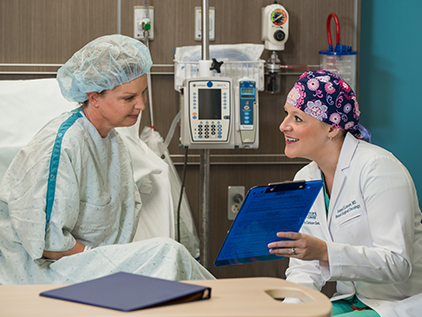June 17, 2022
As physicians, we strive not only to treat our patients' medical conditions successfully, but also to optimize their quality of life. For men who have prostate cancer and undergo radical prostatectomy, that quality of life can decrease significantly due to postsurgical incontinence. Now, however, a new technique is helping patients regain normal function within days, not months, after surgery.
An innovative approach
The approach, first developed in 2013, focuses on the retropubic space, also known as the space of Retzius, which is found between the pubic bone and the bladder. It is here that the bladder is attached to the abdominal wall. It is also the space through which traditional radical robotic prostatectomy is performed, requiring ligaments to be cut and the bladder to be moved aside in order to access and remove the prostate.
This disruption contributes to postsurgical incontinence, an effect that often requires men to wear protective pads for months and is a source of significant distress to them. Retzius-sparing radical prostatectomy is an alternate robotic surgical technique that leaves all of the anterior attachments connecting the bladder to the abdominal wall in place. By preserving that anterior support, return of urinary control is much faster. About 75% of men achieve full control within a week of catheter removal.
To spare the bladder's attachments in the retropubic space, we approach the prostate from a completely different angle. The incisions and robotic entry points remain the same as in a standard robotic prostatectomy, but once in the surgical space, we approach the prostate from a posterior, instead of the traditional anterior, position. In essence, the procedure is performed upside-down and backward as compared with traditional robotic radical prostatectomy. The postsurgical quality of life improvement makes the extra time and effort highly worthwhile.
I perform around 16 robotic radical prostatectomies per month – many using this approach. My experience with this procedure and patients' follow-up reports of continence recovery … conclude that this procedure is superior to traditional robotic prostatectomy in terms of early urinary control.
Expertise and super-specialization
Retzius-sparing radical prostatectomy is a more technically demanding surgical procedure than a traditional robotic prostatectomy and takes about 3 hours to complete. While not all patients are candidates for this approach, I use a personalized approach to help men select the surgery that is right for them and their cancer.
As part of a large, academic medical center, my colleagues and I have the opportunity to become super-specialized in our fields. As a urologic oncologist focusing solely on prostate cancer, I perform around 16 robotic radical prostatectomies per month – many using this approach. My experience with this procedure and patients' follow-up reports of continence recovery are consistent with published studies and conclude that this procedure is superior to traditional robotic prostatectomy in terms of early urinary control.
Increasing patient satisfaction while maintaining safety
Initially, the Retzius-sparing approach was used in a highly selective patient population. It is now considered an option for many patients who are candidates for radical prostatectomy. For the typical highly functional man, continence recovery is a significant benefit to the psychological aspects of prostate cancer treatment. Improving patients’ outlook and postoperative satisfaction is enormously rewarding.
While Retzius-sparing radical prostatectomy does involve a different anatomical landscape for the surgeon and a smaller space through which to approach the prostate, another key benefit is that there is no compromise to patient care or safety. At any point during the procedure, the surgeon can revert to traditional radical prostatectomy, should the need arise.
A continuum of care
Retzius-sparing radical prostatectomy is just 1 option offered at The University of Kansas Cancer Center. It's part of the entire continuum of care we provide, from initial evaluation (surveillance and diagnosis) to personalized treatment to care for men once they have completed treatment (survivorship).
Our team also monitors men who are at risk for prostate cancer through an innovative prostate surveillance program, modeled on our successful high-risk breast cancer screening program. Through the prostate surveillance program, we standardize and facilitate evaluation of men who are undiagnosed but have significant risk factors. This includes an age-adjusted PSA reporting system to more accurately measure and interpret risk. Primary care physicians who refer men to this program can focus on other important health maintenance issues, and our team communicates regularly with any new findings in a reciprocal peer relationship.
Our goal is to ensure that men who are at risk for prostate cancer are accompanied all the way through their medical journey. We offer the advantages of advanced screening, radiotherapy and surgical techniques that result in a better experience for our patients.

Dr. Parker is a practicing urologist at The University of Kansas Health System and urologic oncologist at The University of Kansas Cancer Center. He has a special interest in prostate cancer, including the minimally invasive management of prostate cancer, the management of advanced, recurrent and metastatic prostate cancers using a multidisciplinary approach and the care of the prostate cancer survivor.

Cancer care you can count on
The University of Kansas Cancer Center is 1 of fewer than 60 NCI-designated comprehensive cancer centers in the nation, and it's part of The University of Kansas Health System.
